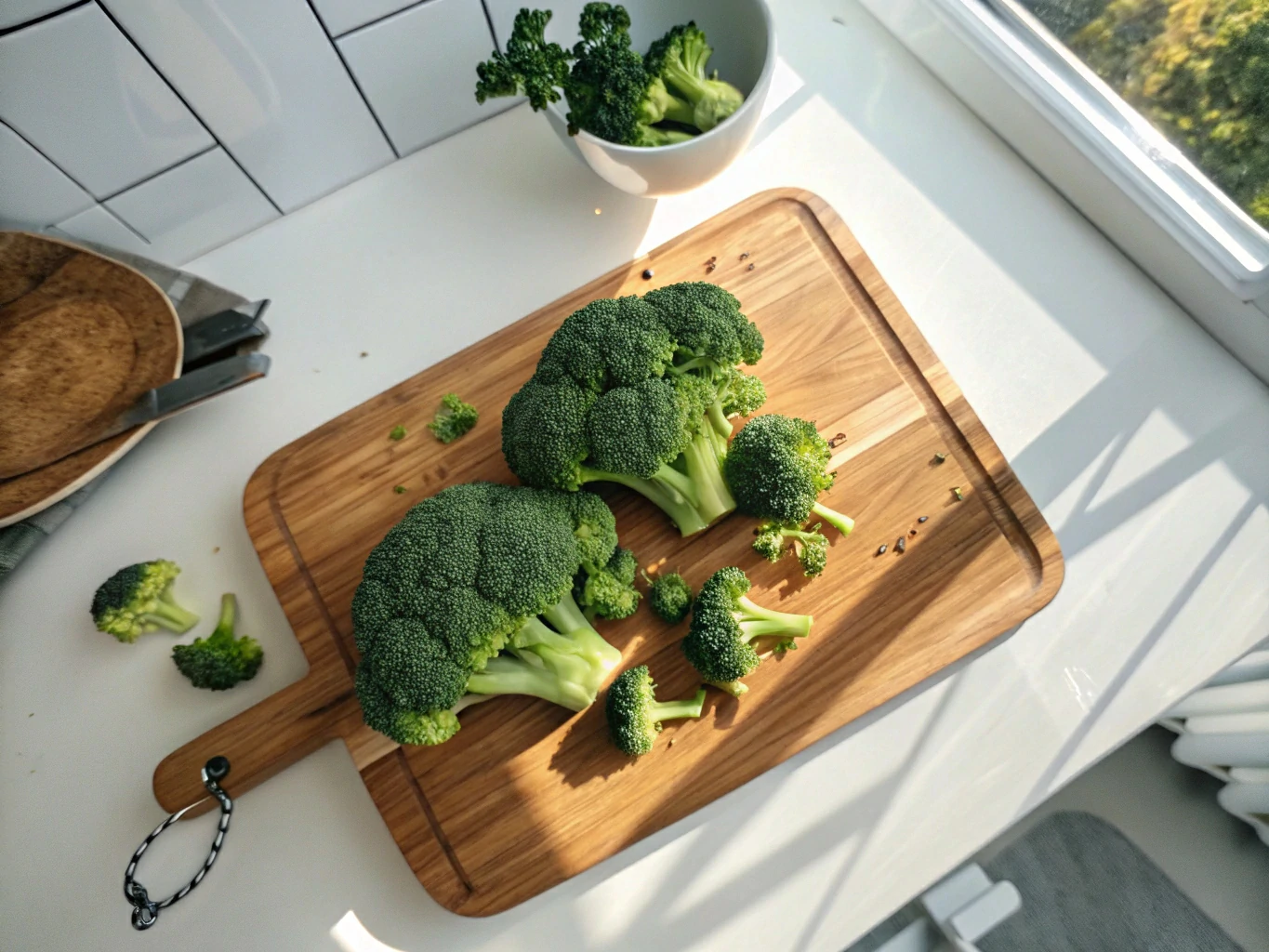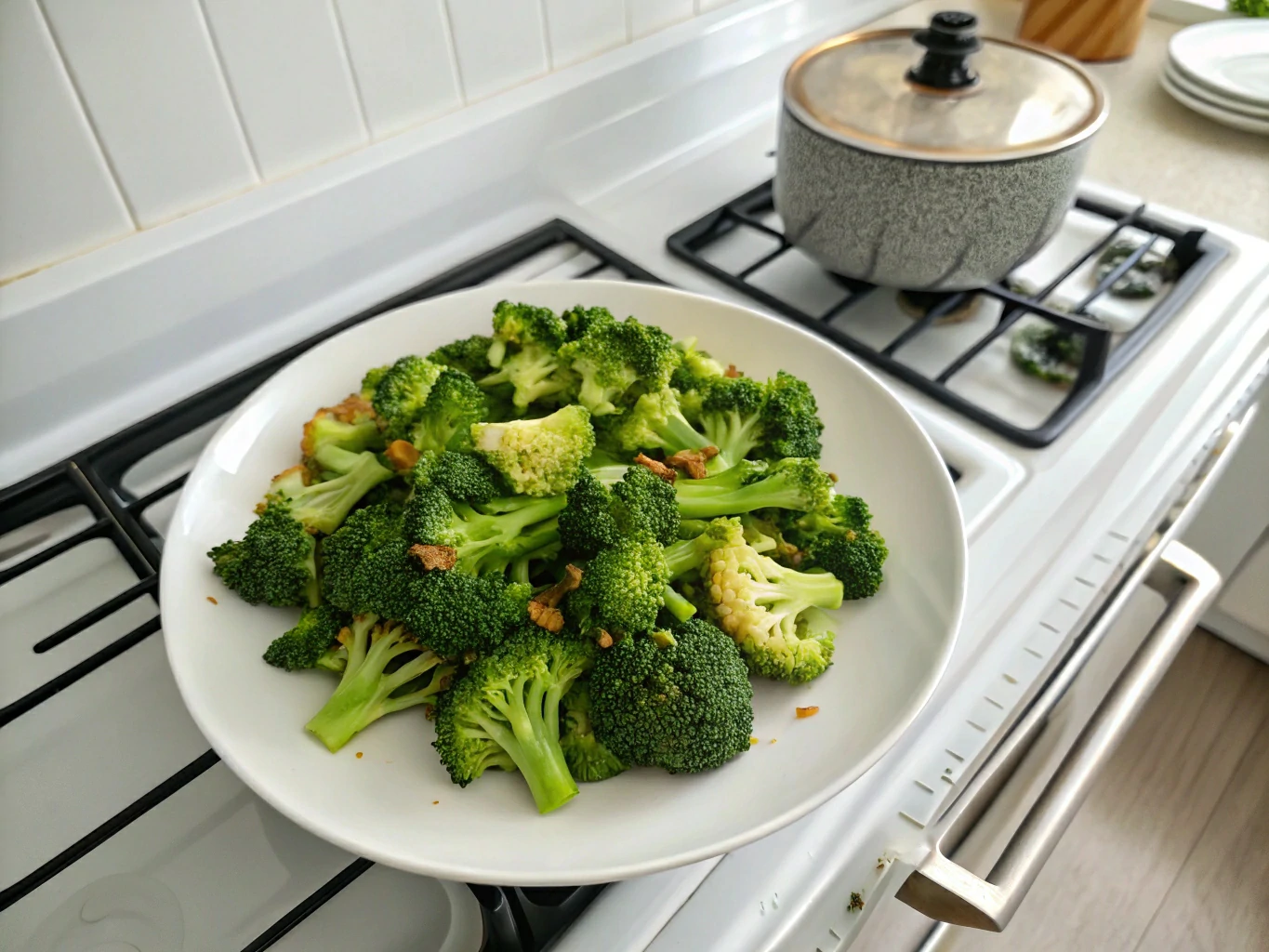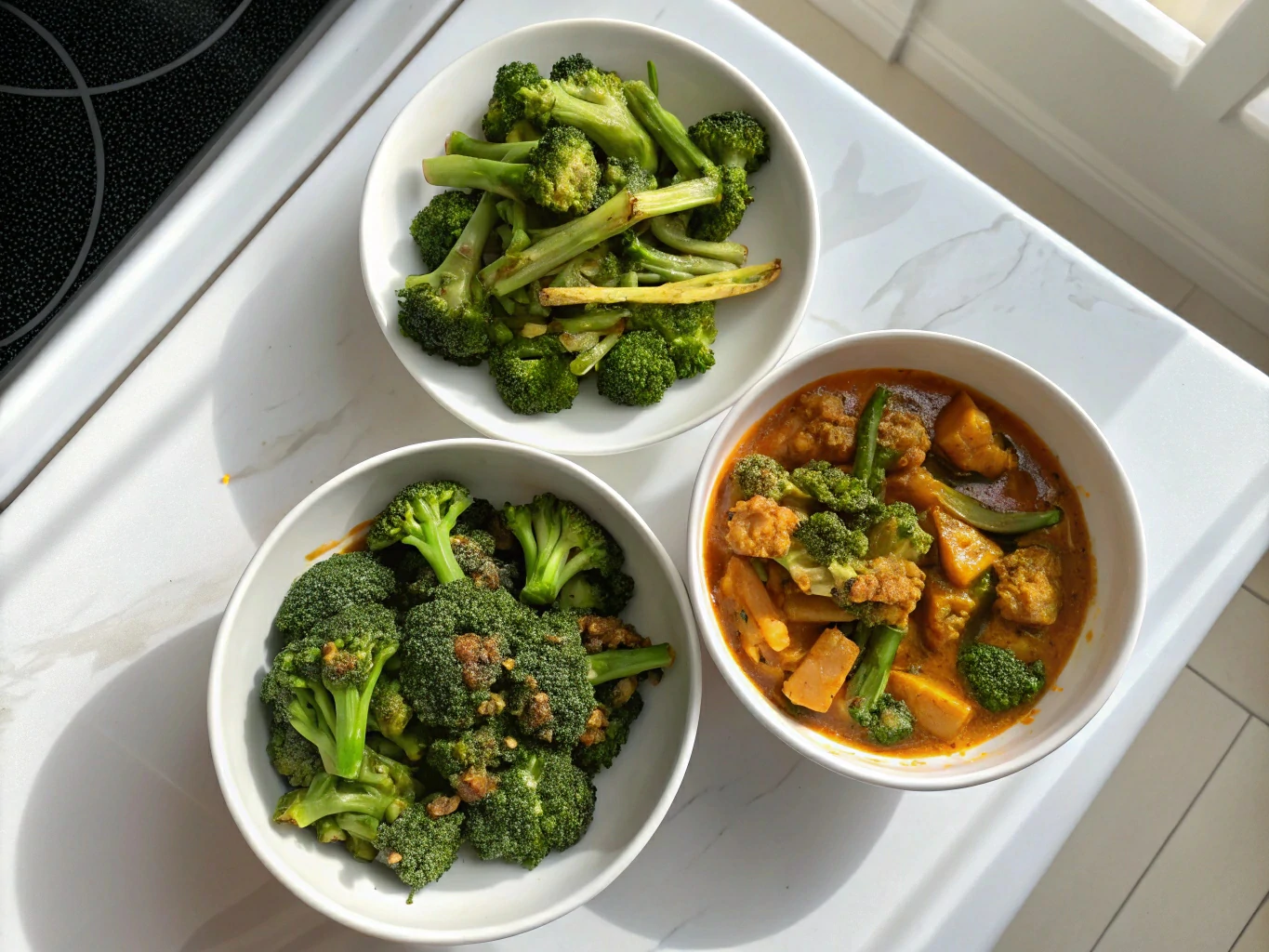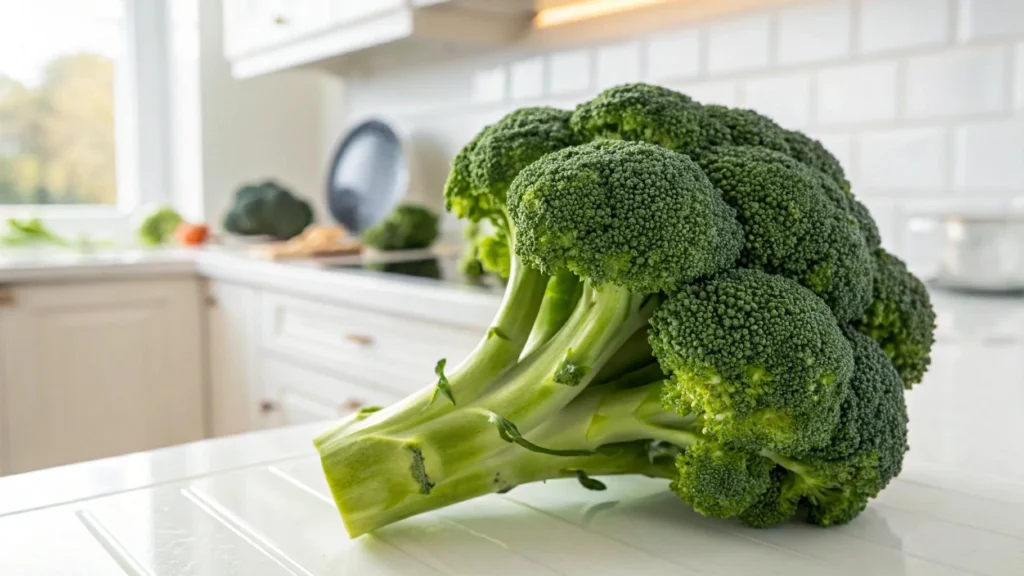Did you know a single cup of broccoli packs more vitamin C than an orange? This humble green veggie is a nutritional powerhouse, offering benefits from head to toe. Whether you’re aiming to boost your health, whip up delicious recipes, or master the art of cooking broccoli, this guide has you covered. From cancer-fighting compounds to kid-friendly dishes, let’s dive into why broccoli deserves a starring role in your kitchen.
Health Benefits of Broccoli
Broccoli isn’t just a side dish it’s a superfood with science-backed benefits. Here’s why it’s a game-changer for your health:
- Cancer Prevention: Broccoli contains sulforaphane, a compound that may reduce the risk of certain cancers, like breast and prostate. A 2020 study showed sulforaphane inhibits cancer cell growth National Cancer Institute.
- Heart Health: With potassium and fiber, broccoli supports healthy blood pressure and cholesterol levels American Heart Association.
- Digestive Health: One cup offers 2.4 grams of fiber, promoting gut health and regularity.
- Immune Support: Vitamin C (135% of your daily needs per cup) strengthens your immune system.
- Weight Management: Low in calories (31 per cup), broccoli’s fiber keeps you full longer.
- Bone Health: Vitamin K and calcium build strong bones, reducing osteoporosis risk.
- Brain Health: Antioxidants like lutein may protect against cognitive decline.
- Skin and Eye Health: Zeaxanthin supports vision and fights UV damage.
“Broccoli is a nutritional superstar, offering benefits from head to toe.”
Cynthia Sass, Registered Dietitian Health.com

Nutritional Value and Science Behind Broccoli
Why is broccoli so good for you? Let’s break down its nutritional profile:
- Macronutrients:
- Calories: 31 kcal per cup (raw)
- Carbs: 6g
- Protein: 2.6g
- Fat: 0.3g
- Micronutrients:
- Vitamin C: 81 mg (135% RDI)
- Vitamin K: 92 mcg (116% RDI)
- Folate: 57 mcg (14% RDI)
- Fiber: 2.4g, aiding digestion and heart health.
- Antioxidants: Sulforaphane, lutein, and zeaxanthin fight oxidative stress.
Cooking Impact: Steaming preserves nutrients better than boiling, which can reduce vitamin C by up to 50%. Raw broccoli retains the most nutrients but may be harder to digest for some.
| Nutrient | Amount per Cup (Raw) | % Daily Value |
|---|---|---|
| Calories | 31 kcal | – |
| Vitamin C | 81 mg | 135% |
| Vitamin K | 92 mcg | 116% |
| Fiber | 2.4 g | 10% |
Pro Tip: Pair broccoli with healthy fats like olive oil to boost absorption of fat-soluble vitamins like vitamin K.

Delicious and Healthy Broccoli Recipes
Ready to make broccoli the star of your meals? These recipes are easy, nutritious, and bursting with flavor. Each is designed to be healthy and free of non-halal ingredients.
1. Healthy Broccoli Salad
- Ingredients:
- 4 cups broccoli florets
- 1 cup chickpeas (canned, rinsed)
- ¼ cup sliced almonds
- 2 tbsp olive oil
- 2 tbsp lemon juice
- 1 tbsp tahini
- Steps:
- Chop broccoli into bite-sized pieces.
- Mix olive oil, lemon juice, and tahini for dressing.
- Toss broccoli, chickpeas, and almonds with dressing.
- Chill for 30 minutes before serving.
- Nutrition: 180 kcal, 8g protein, 10g fiber per serving.
2. Broccoli and Tofu Stir-Fry
- Ingredients:
- 3 cups broccoli florets
- 1 block firm tofu, cubed
- 2 tbsp soy sauce
- 1 tsp ginger, grated
- 2 cloves garlic, minced
- Steps:
- Sauté tofu in olive oil until golden.
- Add broccoli, garlic, and ginger; stir-fry 5 minutes.
- Add soy sauce and cook 2 more minutes.
- Serve over brown rice.
- Nutrition: 200 kcal, 12g protein, 6g fiber per serving.
3. Creamy Broccoli Soup
- Ingredients:
- 4 cups broccoli florets
- 1 onion, chopped
- 2 cups vegetable broth
- 1 cup coconut milk
- Salt and pepper to taste
- Steps:
- Sauté onion until soft.
- Add broccoli and broth; simmer 10 minutes.
- Blend with coconut milk until smooth.
- Season and serve warm.
- Nutrition: 150 kcal, 5g protein, 4g fiber per serving.
Pair your soup with our Healthy Cinnamon Rolls for a cozy meal.
Cooking Tips and Methods for Broccoli
Want to make broccoli taste amazing while keeping its nutrients? Try these cooking tips:
- Steaming: 5-7 minutes to preserve vitamin C and sulforaphane.
- Roasting: Toss with olive oil, salt, and pepper; bake at 400°F for 15-20 minutes for crispy edges.
- Sautéing: Cook with garlic and lemon zest for a zesty kick.
- Raw: Use in salads or as a crunchy snack with hummus.
- Blanching: Boil 3 minutes, then ice bath to freeze for up to 8 months.
- Kid-Friendly: Cut into “trees” or mix into cheesy dishes for picky eaters.
“Roasting broccoli transforms it into a sweet, nutty delight.”
Beth Czerwony, Registered Dietitian Cleveland Clinic
Pro Tip: Don’t toss the stems! Peel and slice them for soups or stir-fries.
Love roasting? Check out our Yukon Gold Potatoes Recipes for more ideas.
Broccoli in Different Diets and Lifestyles
Broccoli fits seamlessly into any diet or lifestyle:
- Vegan/Vegetarian: Use in stir-fries, smoothies, or as a creamy soup base.
- Keto/Low-Carb: Pair with high-fat ingredients like olive oil or avocado.
- Weight Loss: Low-calorie options like salads or steamed broccoli.
- Family-Friendly: Sneak into pasta or blend into smoothies for kids.
Case Study: A 2021 study found that incorporating broccoli into meals helped participants feel fuller, aiding weight loss efforts Journal of Nutrition.
Craving a sweet treat? Try our Healthy Peanut Butter Cups for a guilt-free dessert.

Broccoli Around the World
Broccoli’s versatility shines in global cuisines, making it a universal favorite:
- Italian: Sautéed with garlic, olive oil, and lemon for a classic side.
- Chinese: Stir-fried with vegetarian oyster sauce and ginger.
- Indian: Spiced broccoli curry with coconut milk and turmeric.
This global perspective sets our guide apart, appealing to diverse readers and showcasing broccoli’s adaptability.
Conclusion
Broccoli is more than a veggie—it’s a health hero, a culinary star, and a global favorite. From fighting cancer to delighting your taste buds, it’s a must-have in every kitchen. Try our recipes, experiment with cooking methods, and share your creations with us!
Sign up for our newsletter for weekly healthy eating tips.
FAQ Section
- What are the 10 benefits of broccoli?
Broccoli supports cancer prevention, heart health, digestion, immunity, weight management, bone health, brain function, and more. - Is cooked broccoli healthier than raw?
Both are healthy; steaming preserves nutrients, while raw offers maximum vitamin C. - Does broccoli have protein?
Yes, 2.6g per cup, making it a solid plant-based protein source. - Can broccoli help with weight loss?
Its fiber and low calories promote fullness, aiding weight management.



